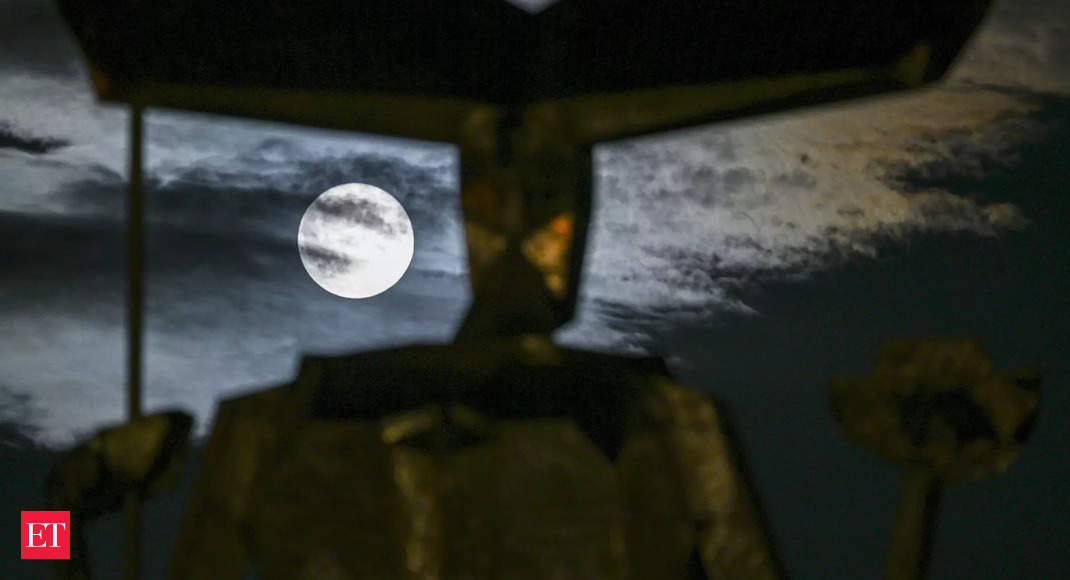On the night of August 30, 2023, skygazers around the world will be treated to a rare and captivating lunar event known as the ‘blue supermoon.’ This phenomenon is more than just a poetic description; it signifies the convergence of three distinct lunar occurrences that promise a breathtaking display in the night sky.
The upcoming full moon is an extraordinary combination of a supermoon and a blue moon, aligning with the Hindu festival Rakhi Purnima. This celestial trifecta is a testament to the intricate connections between astronomical events and cultural celebrations.
Scheduled to reach its peak at 9:36 p.m. ET (7:06 a.m. IST on August 31), the blue supermoon is a treat for both astronomers and enthusiasts alike. Contrary to the name, a blue moon does not refer to the moon’s color; rather, it signifies the second full moon within a calendar month or the third full moon in an astronomical season with four full moons.
Blue moons are a rare occurrence, happening every 2 to 3 years. The last such event took place on August 22, 2021. The synchronicity of two full supermoons in a single month last happened in 2018 and won’t repeat until 2037. This rarity is what has given rise to the phrase ‘once in a blue moon.’
The term ‘supermoon’ describes a full moon’s proximity to Earth during its full phase, causing it to appear larger and brighter in the night sky. On August 30th, the moon will be particularly close, a mere 222,043 miles (357,344 kilometers) away. This will be a spectacle to behold, especially with the presence of Saturn, the ringed planet, accompanying the blue supermoon.
Coinciding with the blue supermoon is Rakhi Purnima or Raksha Bandhan, a Hindu festival that celebrates the enduring bond between siblings. The ritual of sisters tying rakhis around their brothers’ wrists symbolizes mutual protection and love.
This celestial event holds significance across various calendars. In the Chinese calendar, it marks the middle of the seventh month, while in the Islamic calendar, it’s known as Safar. For Jewish observers, the full moon falls during Elul, a time of introspection leading up to Rosh Hashanah and Yom Kippur.
As the blue supermoon graces the night sky, it’s a moment to appreciate not only the celestial wonders but also the bonds that tie us together. Whether dressed in celestial attire or simply gazing up in wonder, this unique occurrence invites us to cherish family connections, release negativity, and usher in a year of prosperity.











